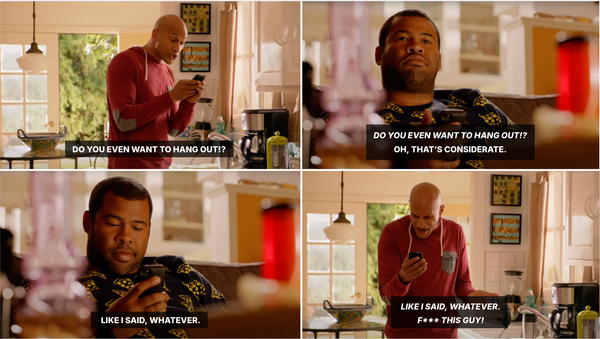AI Research: Only 7% of Marketing Jobs Are Safe
We reviewed the academic literature on the potential for AI machine learning to automate certain professional tasks. Then we compared and ranked those functions against the modern marketing org – a mere 7% of which is strongly resistant to automation.

The impact of ChatGPT and similar generative AI applications on the marketing org is the source of massive speculation.
Will the technology replace the majority of marketing professionals, who will then be relegated to walk dogs and fix air conditioners? Or, will it be an accelerant for the discipline – empowering better creative, driving stronger audience connections and differentiating talent?
As always, the truth lies somewhere in between the two extremes, with generative AI introducing new capabilities to automate certain tasks, while preserving other functions for [human] marketing professionals.
We reviewed the academic literature on the potential for AI machine learning to automate certain professional tasks. Then we compared and ranked those functions against the modern marketing org – a mere 7% of which is strongly resistant to automation.
Here's what we discovered:
The Functions Least Likely to be Automated: Strategy & New Brands, Category Strategy & Innovation, and Brand Management
The more strategic, less brand-aligned functions scored the highest in terms of how defensible they are to being replaced by automation. The strategy and new brands functions had the largest concentration of highly defensible tasks. Brand management and category strategy and innovation also maintained a small but significant portion of highly defensible tasks.
This makes sense as these roles make decisions about future investments, taking risk and perception into consideration, and are responsible for generating new ideas, which is highly reliant on social and creative intelligence.
The Functions Most Likely to be Automated: Insights, Media and Internal Agency
On the other hand, jobs that scored lower in defensibility against automation were concentrated on day-to-day growth or management of the existing business, including receiving and maintaining brand positioning. Accordingly, Internal agency, insights and media roles are expected to be less resilient as AI and machine learning are further deployed in the marketing process.

So, how did we get here?
We started by conducting a meta-analysis of the academic literature, which pointed to six capabilities least susceptible to automation:
- Perception: Tasks that require complex human perception – assessing a landscape or situation and identifying proximity and properties – and decision-making based on that perception are too difficult for machines or algorithms to replicate.
- Creative Decisions: While generative AI has proven valuable in the creative brainstorming process or in speeding up the execution of creative or messaging, it cannot replace actual creativity – “the ability to come up with ideas or artifacts that are novel and valuable.”
- Social Tasks: Tasks that require social intelligence, like negotiation and persuasion, require an iterative process of assessment of and reaction to human emotion. While some algorithms can replicate aspects of this process, such as predicting likely responses, they fail to reproduce the real-time analysis and reaction of a human.
- Development of Positioning: Technology-enabled segmentation and targeting can certainly inform positioning, but strategic positioning that communicates a value or message that resonates at a personal, emotional level with consumers remains a uniquely human ability.
- High-level Product Decisions: Research suggests that high-level product decisions that are based on assessments of consumer behavior and identity are too difficult to automate; however low-level product tasks such as brand logo design can be supported by AI.
- Entrepreneurship: Creative entrepreneurship – that is, the process of identifying, pursuing and capturing new opportunities for business innovation, creation and growth – requires more creative intelligence and dexterity than AI can currently provide.
Then What?
To understand the distribution of these tasks across the marketing org, we ran these functions against a large global beverage company. Using ChatGPT, we created 73 unique job descriptions for the company’s 233 marketing positions.
Is that it?
Not quite. We then classified the job descriptions according to the six functions that are difficult to automate, giving each a rating of 1 (low requirement), 2 (medium requirement) and 3 (high requirement).

Badda bing badda boom.
We averaged those ratings to get a final score and a scale to evaluate all jobs against.
- Jobs that scored 2.5 or above represent the roles that have a high defensibility against automation.
- Jobs that scored between 1.51 and 2.49 have a medium defensibility
- Jobs that that scored below 1.5 have a low defensibility.
Low and medium defensibility doesn’t necessarily mean that these jobs will be replaced by AI, but it does mean that many of the functions currently associated with these roles could be improved or streamlined using AI technology.

The average score across the full marketing org was 1.67:
- 16 jobs (7%) scored 2.5+
- 99 jobs (43%) fell between 1.5 and 2.49
- 118 jobs (50%) came in at 1.5 or below
What comes next?
While this research only scratches the surface on predicting how the gradual evolution of technology and the marketing org will affect one another, it does provide valuable insights on the areas where we need to rethink, realign and reskill certain job functions.
- Enterprising marketing departments will invest in areas like media and insights where AI offers the greatest potential for automation (and ROI). They will simultaneously explore how to take some automatable responsibilities off the plate of professionals with human-intensive roles to free up more of their time to focus on creativity, strategy and innovation.
- We need to research and consider how this breakdown of defensible roles affects different segments of the workforce - against tenure, education, gender and race.
- We need to seriously weigh the costs of automation vs. the benefits. All of these jobs, regardless of their scores, constitute good jobs. And while it may benefit the business’s bottom line to replace certain employees with AI, that could have a long-term detrimental impact on the workforce by eliminating the valuable early-career experience that prepares professionals to take on more complex tasks that cannot be automated later in their careers.
So – if you're interested in hearing more about these findings, or looking to find some opportunities for your own org to build better job futures for the talented folks on your team, hit that reply button. We're here for it!




